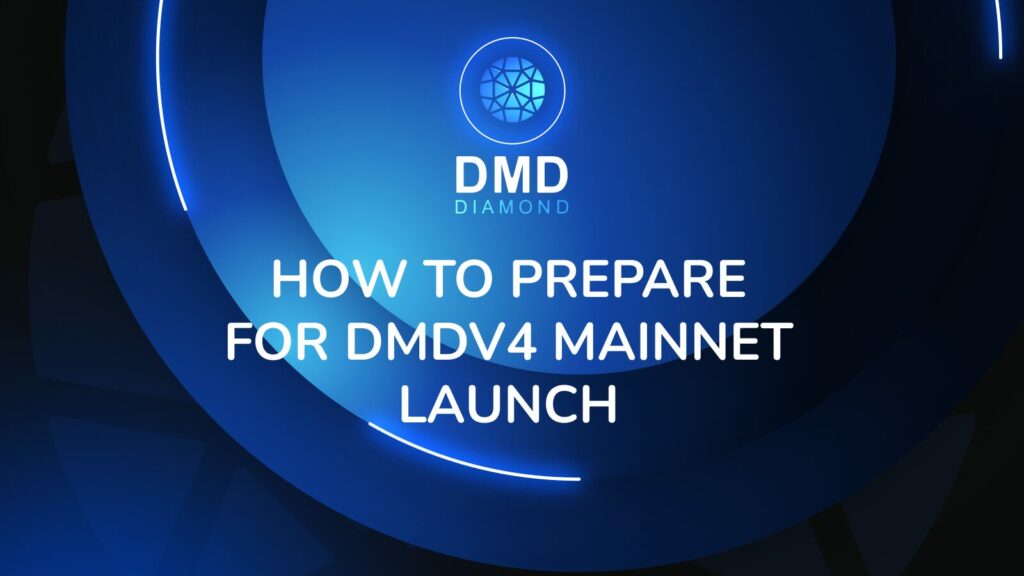As we move closer to the DMDv4 mainnet launch by year-end, you should get acquainted with the operations coming with the next version of the DMD diamond blockchain. This would help you maximize the use cases coming on top of DMDv4 and drive the mission of a future heterogeneous, Interoperable ecosystem. This article provides tips on how to prepare for the DMDv4 main net launch.

First, you should participate in open beta testing once the version is released in a few weeks. The essence of our open beta version is for you to have real-life, end-user testing of the use cases on top of DMDv4 and provide feedback for consideration before the mainnet release.
For instance, to become a validator candidate, it is required you know how to do a complete node installation of the DMDv4 blockchain on a Linux server and the ideal configuration of the DMD diamond version of Open Ethereum, which includes the DMDv4 extensions and HBBFT/POSDAO codebase. You should know how to go about validator candidate registration and collateral locking of DMD diamond coin stakes through the Diamond-UI dApp. The Diamond-UI dApp is web-based and accessible to anyone with a wallet compatible with a custom Ethereum-style network and WalletConnect, such as Metamask, Minerva, or MyEtherWallet.
The minimum validator candidate stake is 10,000 DMD diamond coins. Other coin holders should learn how to stake at least 100 DMD diamond coins on top of a validator (the maximum stake through a validator candidate is 50,000 DMD diamond coins), and you all earn epoch rewards at the end. An Internet with a Static IP address and a reliable 24/7 uptime is required for a validator node (delegated staking needs no node operation and can continue offline once enabled in the Diamond-UI). A link to the node’s address that delivers the validator work is required. In the meantime, here’s a DMDv4 testnet setup guide on setting up and running a node.
Furthermore, you can also host your project or deploy your smart contract to the open-beta version of the blockchain to test-run the industry-first features promised by the blockchain and provide necessary feedback on what to improve before the mainnet release.
Therefore, participating in open-beta testing would offer you the avenue to practicalize and get familiar with how the DMDv4 works, how to run a validator node, how to stake on a validator candidate, how epoch rewards are shared between validators and stakers (or delegators) and how to interact with the web-based Diamond-UI dApp (where you don’t get to stake to earn rewards only, but also see an overview of the blockchain’s operations).
Secondly, to make the claiming of DMDv4 coins with your existing DMDv3 coins (in a 1:1 manner) easier after the DMDv4 mainnet release, it is advisable you gather all your DMDv3 coins from several addresses into a single address to avoid the stress that may come with repetitive claiming. Such manual claiming is possible for coins held in a DMDv3 wallet, where you have access to the linked private keys. Coins on the exchanges can be claimed with the help of the exchanges that listed us (Bitmart and P2PB2B) – they promised to support our switch to DMDv4. Please read through the DMDv4 coin’s claiming guide to learn how to claim and how it works stepwise. Here’s also the claiming roadmap that describes the timeline for claiming your equivalent DMDv4 coins, or else your coins will ultimately become part of validator rewards.
In conclusion, please familiarize yourself with every content on our whitepaper. It is a holistic documentation of what the blockchain is and the use cases it presents. A way to prepare for the mainnet launch is to ask questions about the blockchain or seek clarifications for further understanding in the community channels. That way, you can comprehend what the blockchain offers and how to maximize those offerings. We are an open-source ecosystem; all our code developments and documentation, including the whitepaper, are available on GitHub for suggestions on improvements – to have an ideal ecosystem that can be part of a future heterogeneous, Interoperable blockchain.